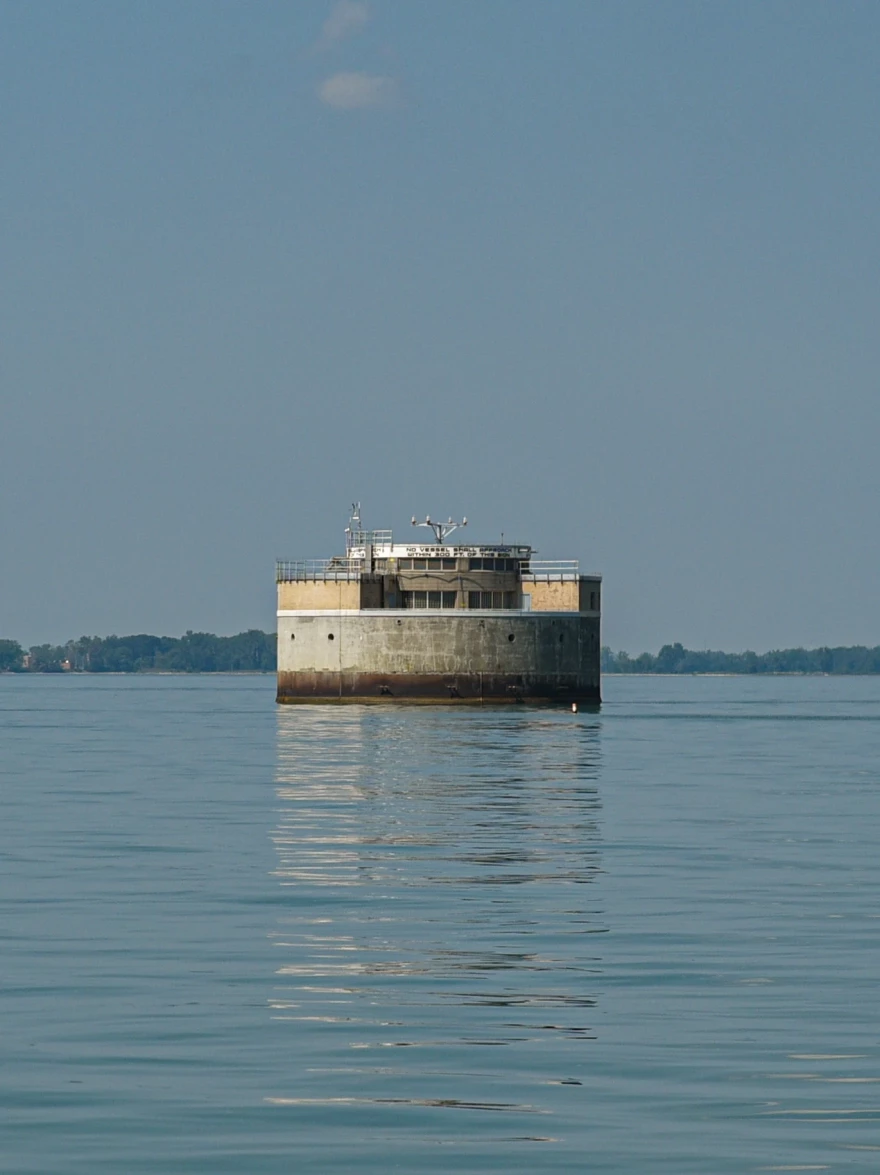People who live near or spend time on Lake Erie are concerned about the annual toxic cyanobacterial blooms that come in the summer. Most people try to keep their kids and pets away from the green scum because it can cause severe health problems. Some researchers now say just being near the blooms might pose a health risk.
Earlier this summer I was out on Lake Erie with some researchers. We had just found what looked to be cyanobacteria on the east side of Maumee Bay, near Toledo. The scum kind of looks like someone spilled bright green paint on top of the water.
We watched as a boater sped along through the scum with kids on big inner tubes bouncing on the green water.
Some people knowingly dismiss the health warnings. Others are just not aware.

But people are starting to understand that as long as the fertilizer pollution that feeds the cyanobacterial blooms keeps being washed into Lake Erie, it's going to be a problem.
A while back, a charter fishing boat captain named Paul Doute told me it gets to be a mess out there.
"Well, it was bad. It really is. I mean, it's pea soup out there right now. You know, I look back — 16 years I've been a charter captain — and every year it's getting worse."
Many charter boat captains are starting to worry not just about the impact on the fish and to their business, but what boating through the toxic blooms to get to open water might mean to their health. It's not unusual to come into contact with the spray from the boat.
"We've known for a long time that harmful algal bloom toxins can get into the air. This has been known, especially in coastal ocean environments," said Gregory Dick, Director of the Cooperative Institute for Great Lakes Research (CIGLR) at the University of Michigan.
He noted on ocean coasts, people know to avoid red tide, a type of harmful algal bloom.
"It's been more recent, I think within the last 5 to 10 years, that we've realized that some of these freshwater cyanobacterial toxins can get up into the air," he added.
Dick's team at CIGLR has been working with another researcher who has some experience with red tide.
Andrew Ault is an Associate Professor of Chemistry at the University of Michigan. He's now looking into what are called freshwater aerosols.

"And what happens is these little bits of liquid or solid that get up into the air are things that can stay up for days to weeks at a time, and we can then breathe them in. And so we're trying to understand what toxins from the water get up into the air."
He said there's not a lot of information yet about cyanobacterial toxins in the air.
"And so we're still now just learning about how much of an effect this is having on people. But anecdotally, there's good evidence that, you know, this can exacerbate things like asthma and other sorts of respiratory symptoms. And we have almost no idea about the chronic long-term effects of this."
The toxins that are released by some strains of cyanobacteria don't happen during the entire lifecycle of the blooms. The cell walls hold the toxins inside the bacterium while it's alive.
Reagan Errera is a research ecologist with the National Oceanic and Atmospheric Administration. She said when it dies, its cell bursts open and toxins get into the water and into the winds.

"They can pick up the toxin as it's being released, as the cells die through just breeze and things along those lines."
Since the blooms are a sort of scum, floating on the water, the toxins from dead cyanobacteria could be released into the air or into water vapor. But it's not just the toxins that can become airborne.
"Cells can also get aerosolized. Perfectly live cells in the water droplets," Errera said.
And when they're deposited someplace such as on shore or farther inland, the cells die and then the toxins are released.
Up until recently, the big worry was that people or animals would ingest cyanobacteria when they're in the water or that people would get the toxins on their hands and then touch their mouth.
Andrew Ault said there are bigger concerns.
"If you breathe in the toxin, it's much more, about a thousand times more harmful than if you drink it, just because our lungs are much more sensitive. Whereas, you know, our digestive tracts are a little bit more used to handling rough stuff."
And once the toxins are airborne, they can travel miles, which could potentially affect the health of folks living in Lake Erie coastal communities. Researchers are just beginning to study whether there are health effects. It will take some time to determine how serious of a threat the airborne toxins are to the public.

